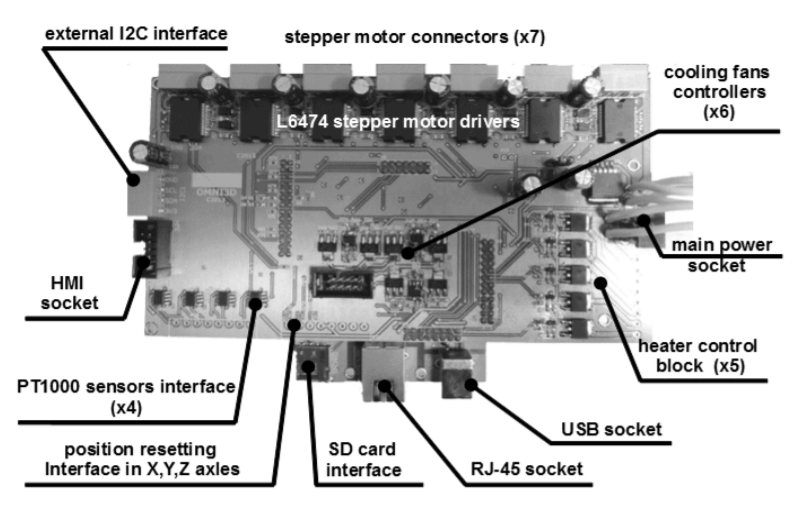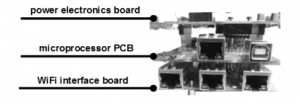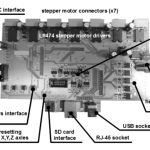

The very important aspect of the new design is to introduce Ethernet interface as an alternative to the USB. The USB interface at FS (full speed) mode uses standard STM32F4 peripheral. Embedded system driver is developed to comply with CDC device class [13]. Furthermore, after considering the Windows system requirements [14] it is possible to use standard USB driver with no additional installation requirement. An Ethernet interface uses Ethernet STM32F4 peripheral and DP83848 MAC driver with reference design [15]. Wi-Fi communication uses wired Ethernet channel of WizFi360 module [16]. As the Wi-Fi module is transparent to the system there is nothing more to discuss. To make the Ethernet interface usable and compatible with Pontefract (printer PC host), software needs to be recompiled in Windows environment (it is possible using the instruction from [17] web page, installing the py2exe extension and use of the supported compilation script setup.py file). Nowadays, native Python 2.7 IDE could be setup on Visual Studio. The Windows compilation of the newest Pontefract version is necessary because of the TCP Stream option availability from configuration menu. TCP Stream needs to be off while using Ethernet connection in the synchronous mode comparable to the USB (COM emulation) interface. Figure 7 presents Pontefract compiled under Windows from source binaries (Python language).


COMMENTS